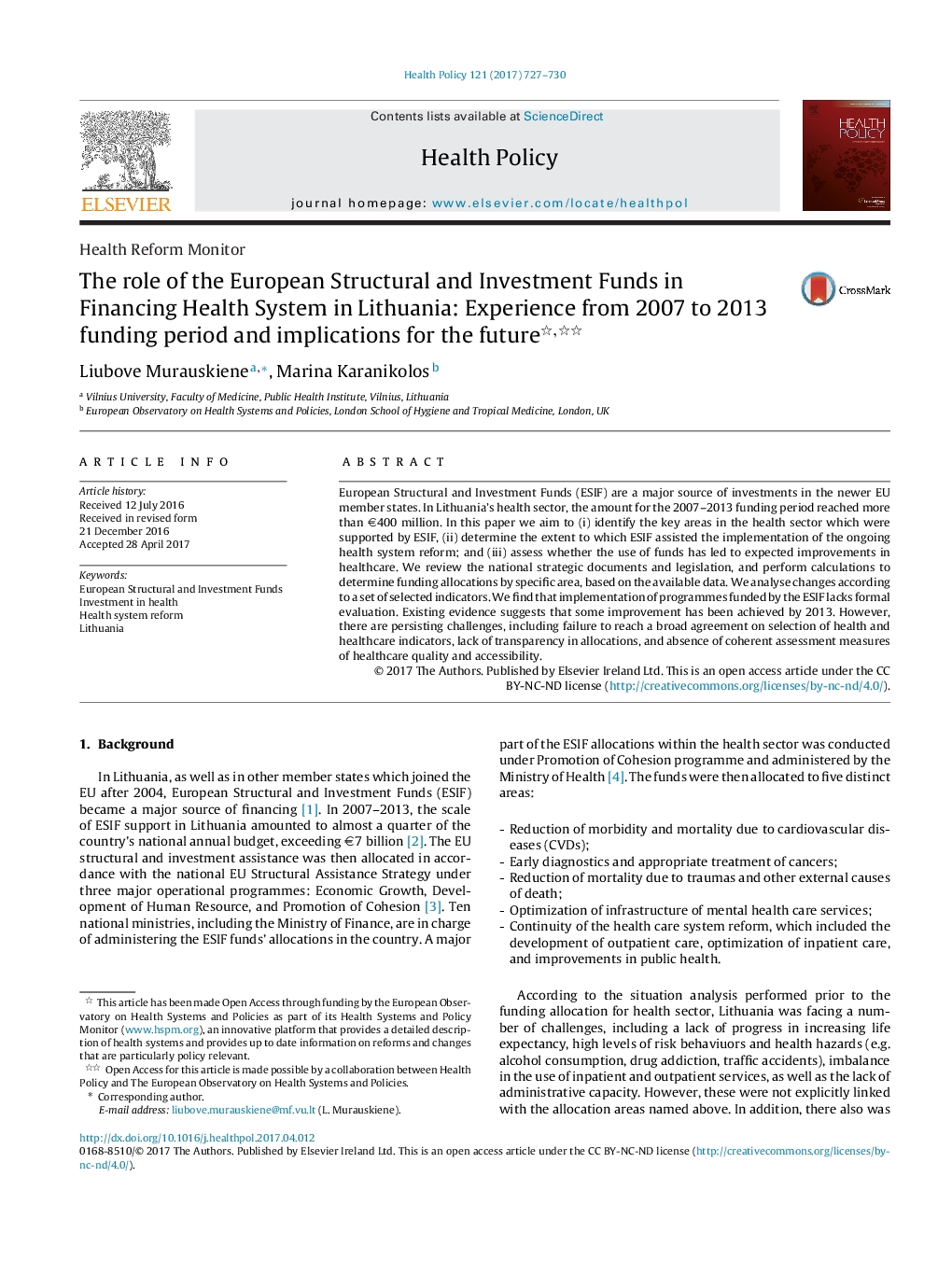| کد مقاله | کد نشریه | سال انتشار | مقاله انگلیسی | نسخه تمام متن |
|---|---|---|---|---|
| 5723442 | 1411450 | 2017 | 4 صفحه PDF | دانلود رایگان |

- The EU structural and investment funds accounted for a quarter of the annual public expenditure on health in Lithuania in 2007-2013.
- Much of funding was for aimed to improve efficiency; treatment of injuries, cancers and CVDs, mostly through upgrades of provider infrastructure.
- Health status and service indicators improved in line with other EU countries, but gaps in health outcomes and resource distribution remain.
- Despite revised approach key challenges remain, including lack of appropriate indicators for monitoring and non-transparent allocations.
European Structural and Investment Funds (ESIF) are a major source of investments in the newer EU member states. In Lithuania's health sector, the amount for the 2007-2013 funding period reached more than â¬400 million. In this paper we aim to (i) identify the key areas in the health sector which were supported by ESIF, (ii) determine the extent to which ESIF assisted the implementation of the ongoing health system reform; and (iii) assess whether the use of funds has led to expected improvements in healthcare. We review the national strategic documents and legislation, and perform calculations to determine funding allocations by specific area, based on the available data. We analyse changes according to a set of selected indicators. We find that implementation of programmes funded by the ESIF lacks formal evaluation. Existing evidence suggests that some improvement has been achieved by 2013. However, there are persisting challenges, including failure to reach a broad agreement on selection of health and healthcare indicators, lack of transparency in allocations, and absence of coherent assessment measures of healthcare quality and accessibility.
Journal: Health Policy - Volume 121, Issue 7, July 2017, Pages 727-730